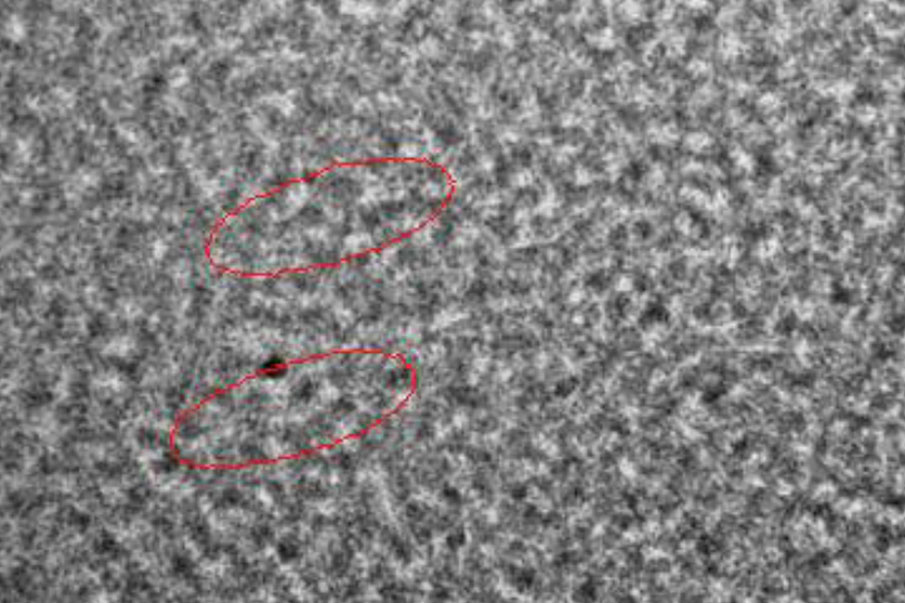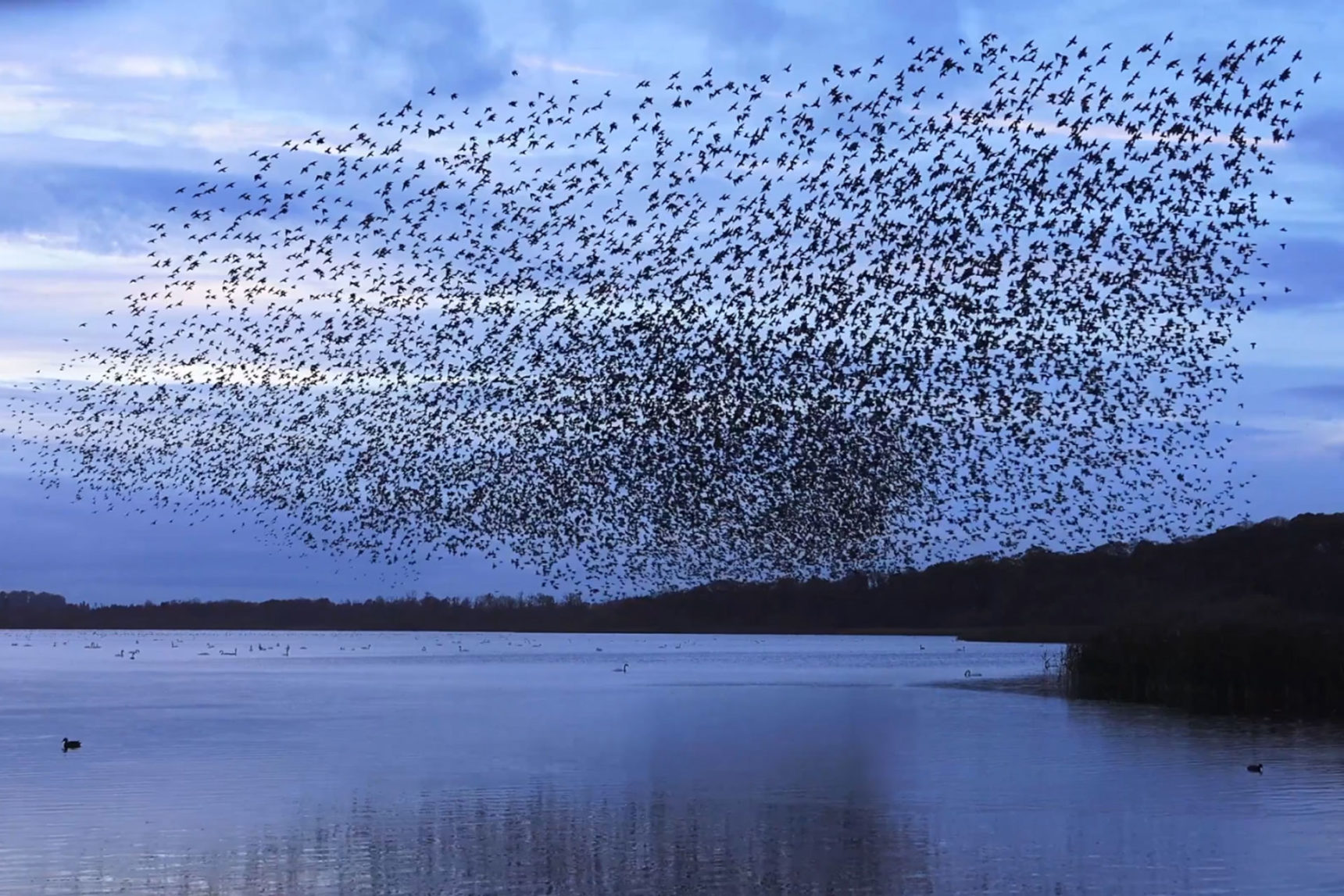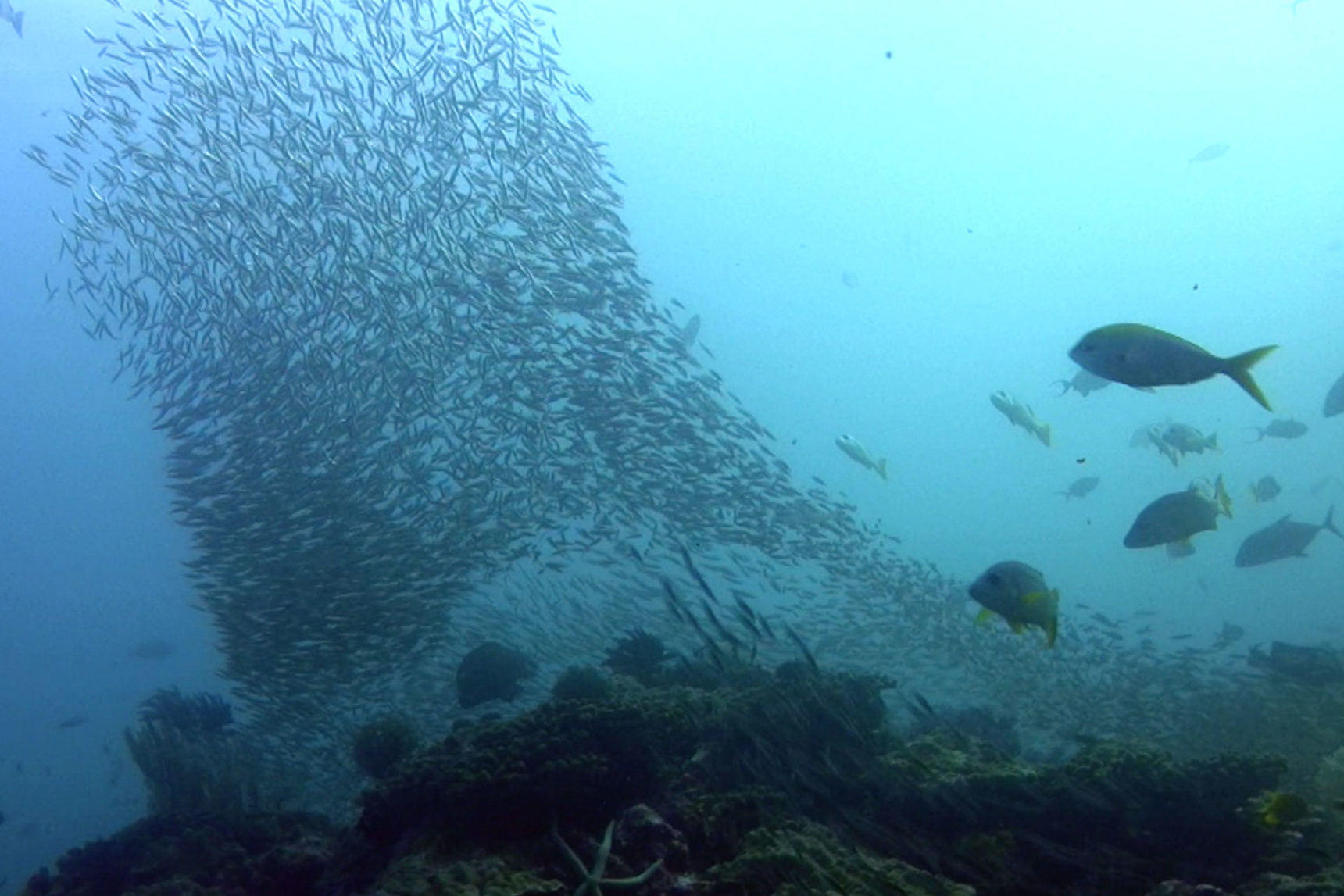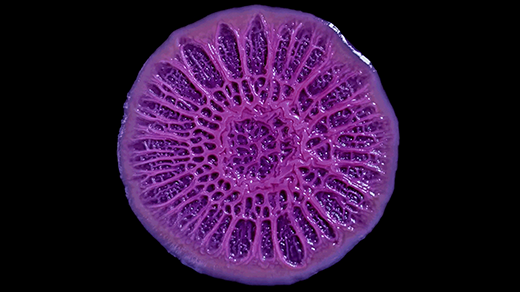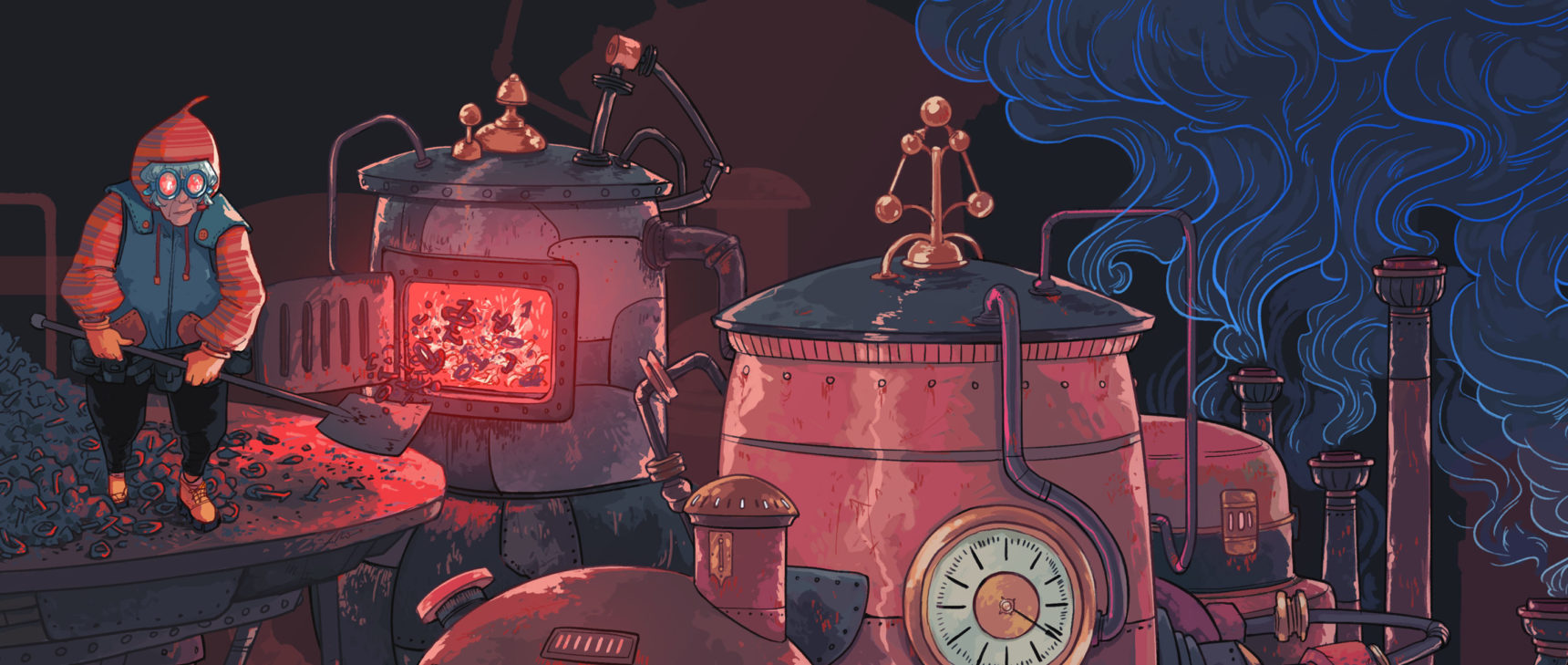Swirling Bacteria Linked to the Physics of Phase Transitions
Introduction
At first glance, the movie didn’t seem like much: a chaotic swarm of E. coli bacteria twiddling this way and that in a petri dish, seemingly at random. Such scenes are daily fare in bacteriology labs around the world.
But Chong Chen, a graduate student at the Chinese University of Hong Kong who was showing the movie at a 2015 physics meeting, highlighted a remarkable observation: As the colony grew more crowded, large groups of bacteria suddenly began moving nonrandomly, in a subtle but fascinating way. When the motions of thousands of bacteria were averaged, they traced out regular ellipses that were many times larger than the individual bacteria.
Hugues Chaté, a theoretical physicist at CEA Saclay in France, approached Chen after the session and said he had the theoretical tools to explain Chen’s strange results. The two teamed up, along with Chen’s adviser, Yilin Wu, and this February they published a paper in Nature showing how seemingly uncoordinated motions of individual bacteria can add up to synchronized oscillations at large scales — a phenomenon never before reported in the scientific literature. They have since demonstrated the effect with other species and under different conditions. “This is something really robust and generic,” Chaté said. “It’s a surprising, spectacular phenomenon.”
The study is just one of the ways that researchers are exploring the strange collective behavior of bacteria. Bacterial colonies have been prodded into forming large-scale swirls and streams that seem to move like herds of animals. Researchers have organized bacteria into flowing crystals that resemble the liquid crystals in modern displays. And bacterial motion has even been used to power tiny machines.
The scientists are building a nascent field called “active matter,” in which simple mathematical rules governing interactions between individual units, each harnessing energy and moving on its own, can give rise to large-scale order. This approach has been wildly successful in explaining how water molecules crystallize into ice, and how atomic spins align to form magnets. Physicists are now pushing this idea to its limits in the vast, diverse microbial world. And they believe they have evidence that statistical physics could help explain some of bacteria’s most impressive — and nefarious — behaviors.
When Many Become One
Schools of fish gyrating in spectacular underwater vortices. Armadas of starlings zigging and zagging in the air, as if guided by an unseen hand. The origins of such mass coordinated movements form one of biology’s most fascinating and enduring mysteries. An early 20th-century biologist, perplexed by flocking birds’ ability to suddenly change direction, mused that the birds might share some sort of “group soul.”
To physicists, such collective behavior evokes not souls but phase transitions, which occur when billions upon billions of particles simultaneously become ordered when a bulk parameter such as temperature or pressure increases or decreases past a certain value. Physicists have long been fascinated by phase transitions, because in all their diverse particularities they share a universal and highly developed mathematical language.
Though the concept of phase transitions emerged in the “passive” world that physicists traditionally study — among magnets and water, for example — the phenomenon can also occur in living “active” matter such as birds or bacteria or cancer cells. The difference is that animals and cells harness and use energy independently of one another. Because of this, they aren’t necessarily in thermal equilibrium. That makes this kind of phase transition harder to analyze, but no less important, said Tamás Vicsek, a biophysicist at Eötvös Loránd University in Budapest. “On the surface of Earth, almost everything is nonequilibrium,” Vicsek said. “You just cannot solve them without computers.”
Vicsek almost single-handedly launched the field of active matter in 1995, when he led a team that modeled a cloud of moving particles that had a tendency to align with near neighbors. By tuning just two parameters — density and random noise (a way to represent temperature) — he got the collection to flip from a disordered state, where particles flew this way and that, to an ordered one where particles aligned and “flocked” in the same direction. In other words, he elicited a phase transition. What has become known as Vicsek’s “flocking” model, though he never used that term in his seminal paper, set off an explosion of more sophisticated theories to explain order in out-of-equilibrium systems.
Testing such theories is hard, however, because you need a large group of identical self-propelled units to manipulate and observe. Fish and birds make troublesome experimental subjects, because they literally have minds of their own. Cellular components such as the filaments that give cells structure also display collective behavior but are difficult to isolate and purify, while synthetic particles with the right properties are hard to produce. Living bacteria make a good compromise, said Julien Tailleur, a physicist at the National Center for Scientific Research and Paris Diderot University in France: They take in energy by consuming food, and they move on their own using flagella or other means, attributes that give them the essential hallmarks of active matter. At the same time, they are easy enough to experiment on, and they are available essentially “for free” from the natural environments where they grow: oceans, soil, the human body.
As a bonus, many bacteria resemble Vicsek’s flocking arrows, at least superficially: They are often rod-shaped and have “heads” and “tails.” In fact, Vicsek himself was motivated by collective motion in bacteria, though his name is now associated more with birds, perhaps because the arrows in a figure from his 1995 paper look more like birds than bacteria.
In the years that followed the publication of Vicsek’s paper, experiments confirmed that his model can describe bacterial behavior in simple artificial setups, but they also showed that the model was too simple to do justice to the full complexity of bacteria in nature. Vicsek himself, along with collaborators at Tel Aviv University, took the first step, placing bacteria in two-dimensional films over a thick layer of agar and showing in a 1996 paper that the swirls and colonies they formed could be explained by his model plus “a few natural extensions” to take into account factors such as bacterial chemistry and the fact that bacteria reproduce.
Then in 2004, Raymond Goldstein, a physicist then at the University of Arizona, and colleagues placed bacteria in three-dimensional droplets and observed jets and swirls that appeared and disappeared. The phenomenon could be explained only by adding fluid dynamics to Vicsek’s model, which had been done earlier by Sriram Ramaswamy, a theoretical physicist at the Indian Institute of Science in Bangalore. “We suddenly realized, my goodness, we have a system that’s appearing to do what theory said should happen,” Goldstein said.
In 2010 a team co-led by Hepeng Zhang, a physicist then at the University of Texas, Austin, took another step, using microscopes and image analysis software to quantify movements of individual bacteria — not just groups — in a film. This study confirmed that despite bacteria’s physical and chemical complexity, large-scale patterns in their motion can be explained by simple, Vicsek-like models.
Since then, Goldstein, Zhang and others have become increasingly adept at coaxing bacteria into strange and wondrous acts. Goldstein, now at the University of Cambridge, showed in a series of papers starting in 2013 that confining bacteria in channels can induce them to choose a single direction to flow in. Taking this idea a step further, Roberto Di Leonardo at Sapienza University of Rome has used flowing bacteria to transport small cargo; others have induced them to turn tiny gears. To some, such experiments suggest the potential for bacteria-powered micromechanical devices.
Zhang, now at Shanghai Jiao Tong University in China, has maneuvered bacteria into forming something like a liquid crystal — a type of material whose individual units arrange themselves in response to external influences like electric fields. He did this by exposing a dense group of rod-shaped bacteria called Serratia to an antibiotic that prevents cells from dividing, thereby causing them to grow far longer than normal (though he later discovered different bacteria that are naturally elongated). Eventually the colony got so crowded that the bacteria aligned and began flowing. At certain points in the flow field the cells’ alignment broke down — one group of cells might be perpendicular to a neighboring group, for example. At such “topological defects,” Zhang found, bacteria push and pull the surrounding fluid. This motion then dictates how the entire mass of bacteria move and align. Theorists, including Ramaswamy, had predicted that such alignment and defects would emerge in active-matter systems under certain conditions, and they had been seen in crystals made from rod-shaped cellular components called microtubules. But no one had seen it definitively in living bacteria.
The implications could be significant. Ordinary (passive) liquid crystals have catalyzed a multibillion-dollar display industry, and some active-matter physicists hope that living liquid crystals could likewise lead to new technologies. Zhang isn’t ready to call his creation a liquid crystal, however, and hesitates to suggest an application. “I’m just a physicist,” he said. And researchers are aware that bacteria could present challenges for technological applications: They have to be kept alive, and unlike conventional materials, they reproduce spontaneously. Igor Aronson, a physicist at Pennsylvania State University who adds bacteria to ordinary liquid crystals to create hybrid active-passive materials, suggests another kind of application: Bacterial liquid crystals could help simulate how bacteria interact with biological materials such as mucus, which has properties similar to those of liquid crystals.
Why Bacteria Team Up
The myriad experimental advances have left what is possibly the biggest question largely unanswered: Why do collective behaviors exist at all? Do they help bacteria survive and reproduce, or are they mere byproducts of bacteria’s basic biology, rather like magnetism, which could be considered a byproduct of quantum mechanics?
It’s tempting, of course, to imagine that bacterial patterns represent evolution’s handiwork. “Since the laws of physics allow you to essentially get patterns for free, it’s attractive to think that biology could take advantage of this,” said Joshua Shaevitz, a biophysicist at Princeton University who studies myxobacteria. “It seems like in some instances or maybe even many instances, they are at least partially taking advantage of it.”
From the beginning, active-matter proponents have followed this line of thinking. Vicsek and his co-authors suggested in their 1996 paper that their swirls could help bacteria concentrate nutrients. Goldstein’s group, meanwhile, suggested that their vortices could be the beginnings of sticky bacterial matrices called biofilms. In biofilms, large groups of bacteria can transition from free-swimming individuals to a much less mobile collective state. The analogy to a phase transition is almost irresistible.
Biofilms are a hot topic in biomedical research. They resist antibiotics far more than free-swimming cells, and they can cause infections that are among the hardest to treat. Explaining biofilm formation — and finding ways to prevent or disrupt it — is a dream of bacteria researchers of all stripes, and it has become almost de rigueur to suggest connections between active-matter experiments and biofilms. In their recent Nature paper, for example, Chaté and his co-authors wrote that their oscillating E. coli sometimes deposited what seemed to be biofilm precursors in patterns roughly the same size as the mysterious oscillations they observed. “The deep biological significance we don’t know, but we’re pretty sure whatever is going on in these oscillations has something to do with how the biofilm state grows,” he said.
Others are less convinced that active-matter concepts explain behavior that organisms in nature actually engage in. Active matter-inspired experiments often cram bacteria together at densities above those typically found in natural environments. And bacteria have evolved many ways to form biofilms, some of which have nothing to do with motion, notes Jing Yan, a biophysicist at Princeton. In experiments with Vibrio cholerae, the bacteria responsible for cholera, Yan and colleagues have shown that biofilms form when dividing cells build up to high densities, not as the result of a phase transition from a mobile state. And some bacteria are spherical, not rod-shaped, so models that depend on alignment don’t apply. “In biology, each species is different,” Yan said. “We’re not trying to have some general model for everything.”
Statistical physics may provide part of the explanation for biofilm formation, adds Vernita Gordon, a biophysicist at the University of Texas, Austin, but it cannot fully describe bacteria, with their thousands of genes and proteins and their surfaces bristling with receptors for different molecules. “Thinking solely about the active-matter properties of these bacteria, I think, is leaving out too much of the biology,” she said.
Active-matter researchers have revealed some impressive phenomena, said Gürol Süel, a molecular biologist at the University of California, San Diego, but “it’s up to the physicists to show that there is something here that biologists should pay more attention to.” That means physicists must show how a particular behavior helps bacteria survive and reproduce, as Süel recently did for electrical signals that he found propagating between bacteria in a biofilm. “Whenever we see a pattern, we’re intrigued by patterns, and we immediately assign some kind of meaning … but that doesn’t necessarily mean that it’s something functional,” he said.
But Chaté believes that the active-matter approach has the potential to play a larger role in explaining biology. For one thing, it provides a way to efficiently capture interactions of millions of cells, whose details are far too complex to simulate on a computer. “It will come,” he said. “You can’t ignore it.”
Even if the field is not yet compelling to biologists, physicists will probably continue to flock to it. The number of active-matter papers in journals and at physics conferences has ballooned in recent years, as physicists have increasingly embraced the living world. Chaté, Tailleur and their colleagues see themselves, in a way, as being like the early naturalists — discovering a wondrous and almost overwhelmingly varied new world of bacterial behavior. Just as it took a century to get from Darwin’s and Wallace’s species-cataloging expeditions to a molecular theory of genetic diversity, they insist it is too early to say where this new journey will lead. But they are confident it will bear fruit.
“Right now we’re exploring,” Tailleur said. “At the second stage, when we know what emergent properties are available, we hope we can put them to work for biology.”
This article was reprinted on Wired.com.
